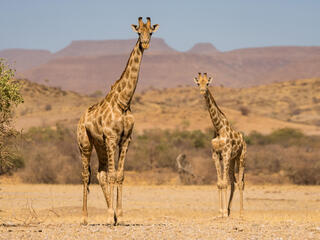Each conservancy is structured in a way that makes the most sense for its location and the surrounding community. Many have formed partnerships with lodge owners to bring in tourists, deriving economic benefits along the way—a key to the success of the conservancy movement. Income generated by conservancies for communities grew from less than $150,000 in 1998 to more than $5 million in 2019.
The conservancy model has also produced impressive gains for wildlife. Namibia’s elephant population has more than tripled; black rhinos, once near extinction, have rebounded and the country now holds the continent’s largest black rhino population; and free-roaming desert lions—reduced to fewer than 25 by the mid-1990s—now number around 120.
I love following the lead of local communities and building a model in which they are the main beneficiaries—and I love the results. But more than anything, I love the fact that Namibia has found a way to translate conservation of species into the strengthening of communities and has done so in a way that is completely its own.
On my last trip to Namibia, I explored a remote valley with Chris Weaver, who led our program there for many years. One morning we crawled across a schist ledge covered in lichen and watched the sun rise above the shifting sands and wandering streambeds. Fever trees dotted the streams, and desert elephants, oryx, and kudu walked steadily across the valley. As we gazed upon the scene, I asked Chris, “Where are the people?” Breaking into a smile, he pointed widely to the left and said, “They live over there, but this”—and here he pointed directly in front of us—“this is their wealth.”
WWF has worked in Namibia for more than two decades, supporting the country’s establishment of a national system of conservancies that puts local communities firmly in charge of their own natural resources. We are proud of all that’s been achieved, and we will be there as long as we are needed. But this conservation success story belongs to the Namibian people.

Carter Roberts
President & CEO




